Today we have a review of the Supermicro A1SRM-LN7F-2758. If nothing else from this review you are going to see what may just become the hottest network appliance platform for applications such as vyatta, pfsense and other embedded network appliance applications. Supermicro has an appliance with seven Intel-based gigabit NICs plus an additional out-of-band management NIC. Six of the gigabit NICs can operate in bypass mode. This is combined with an 8-core Intel Atom C2758 processor with QuickAssist. QuickAssist is a functionality Intel is pushing that has capabilities to enable faster encryption. Intel has demoed the functionality under Linux doing OpenSSL acceleration which is becoming an ever increasingly more prominent network function. Supermicro already has a A1SRi-2758F platform which we reviewed and has been extremely popular for its quad port NIC. The A1SRM-LN7F-2758 takes the network platform to the next level and is an awesome network appliance building block.
Test Configuration
Our test configuration was very simple. The Intel Atom C2758 comes embedded in the motherboard itself. As a result, the platform is very simple to work with.
- Motherboard/ CPU: Supermicro A1SRM-LN7F-2758 with embedded Atom C2758
- RAM: 2x 8GB DDR3L 1600MHz
- SSDs: 1x Crucial M500 120GB mSATA SSD, 4x Intel S3500 240GB SSD
While this may not seem like an enormous configuration, it is fairly high-end for what would be required by most appliances.
Supermicro A1SRM-LN7F-2758 Overview
The first aspect of the motherboard is that it is a mATX form factor but only measures 8.0″ x 9.6″ in dimensions. Supermicro does include full-length DDR3 DIMM slots so there is no need for SODIMM memory here. The platform comes with a 1U passive heatsink on the CPU and at 20w there is only a bit of airflow required to keep the system running cool.
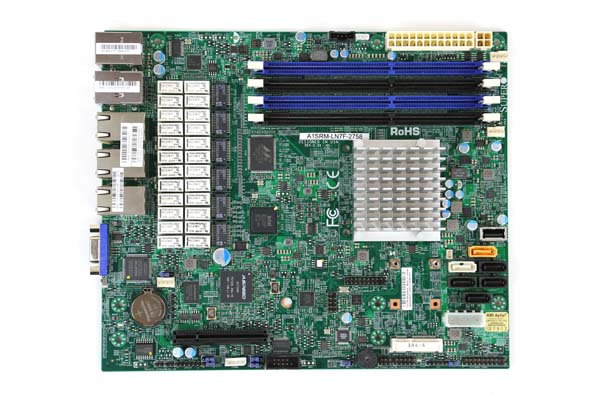
In terms of expandability there is a single PCIe 2.0 x4 electrical (x8 physical) slot that is open-ended. One could, in theory fit a larger PCIe x16 physical card in the slot. That is a great design feature.
The platform also includes an array of storage options. There are six SATA ports, two SATA3 6.0gbps ports and four SATA2 3.0gbps ports. Supermicro has both their SuperDOM and SATADOM options as well as a Type-A internal USB header. Those allow for low footprint boot devices to be used and are very popular for applications such as hosting base hypervisors such as VMware ESXi.
One of the SATA ports (SATA0) can be re-directed through the mSATA slot. For embedded applications, being able to use a mSATA option means that one can use a fairly large disk in a very compact chassis.
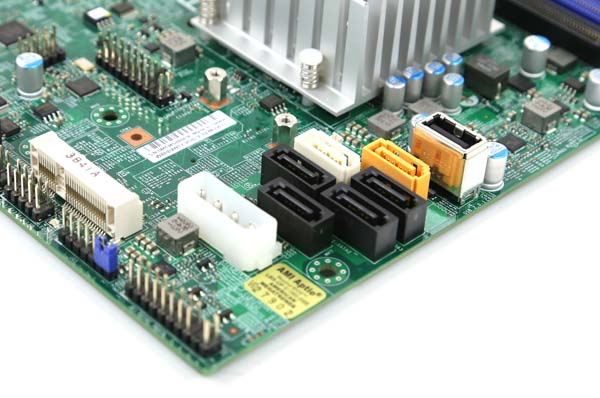
We snapped a picture of the platform with a Crucial M500 120GB mSATA drive along with RAM. One can see the overall platform remains extremely compact.
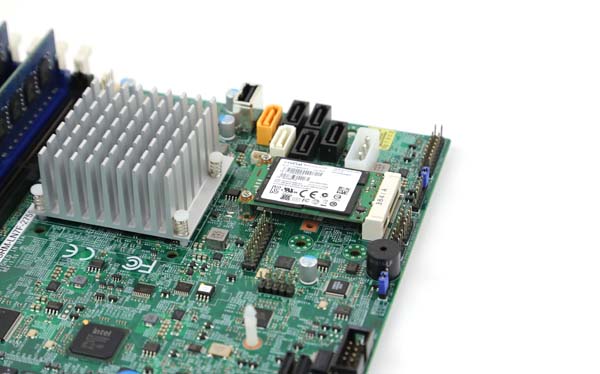
Here is a quick BIOS shot using that Crucial mSATA SSD as a boot device option. This is better for higher-capacity/ boot drive applications where a generally smaller and lower write endurance USB boot device or DOM would otherwise be used.
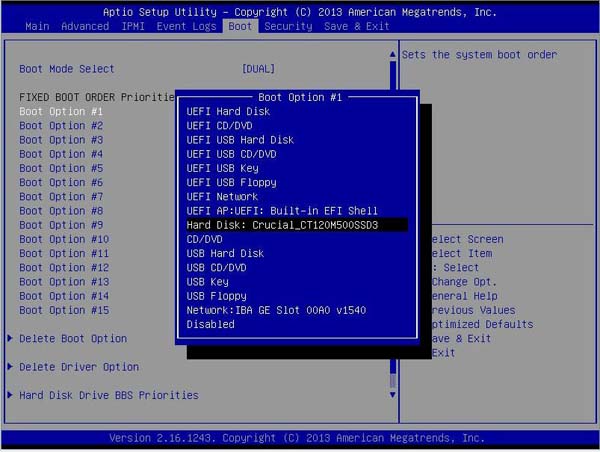
Now for the serious business end of the A1SRM-LN4F-2758: networking. There are a lot of ICs and components here. Some of the larger ones are the Marvell Alaska PHY for the Intel Atom C2758’s onboard Intel i354 controller. We have covered this topic extensively but to the OS, this is an Intel NIC, not a Marvell NIC. The Intel i354 controller supports four of the motherboards network ports. To the right of the Marvell chip is the Intel I350-AM2 controller. That controller controls two of the network ports. The final data NIC is next to the large block of black and white components Supermicro uses on their extended life embedded communications platforms, and is an Intel i210-AT NIC.
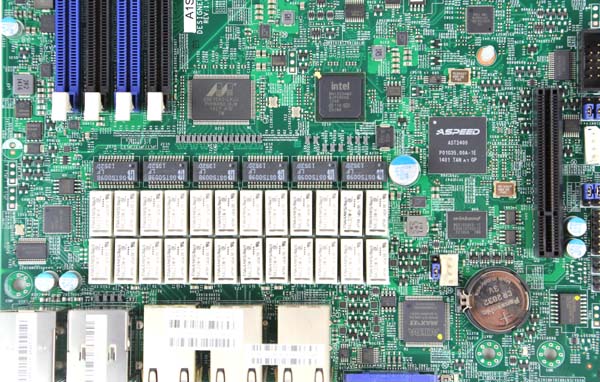
For those curious, the ASPEED AST2400 is the BMC that provides everything from out-of-band management to VGA output.
Now to the rear IO panel. There first NIC atop two USB ports is the OOB IPMI management NIC. To the right are two USB ports with another RJ-45 connector atop. This connector is wired to the Intel i210-AT NIC. That is important because the designers have visually made it very easy to see the two NICs which do not have bypass adapter options. The next six Ethernet ports are the bypass adapter pairs controlled by the Intel i354 and i350-am2 NICs.
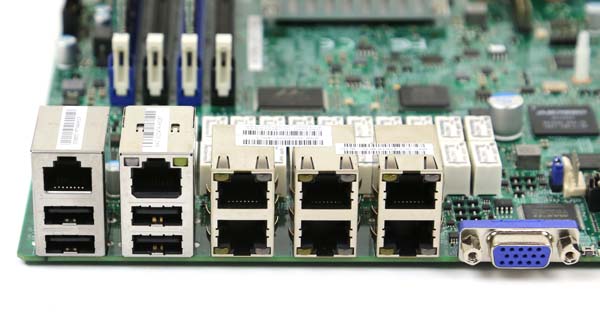
There is also a VGA connector for video out. This is the first Intel Atom C2000 series platform we have seen with such an extensive network array. This is combined with Rangeley’s network acceleration function, high-end embedded components and this is likely the top Rangely platform available today.
Network Adapter BIOS Settings
Although this is not a standard part of our reviews, we did want to show off what the network options look like from a BIOS perspective. One can see that all seven of the data NICs can have Option ROMs enabled. One can, for example, use the i210 based NIC to PXE boot images. PXE booting allows the platform to have even fewer potential components that can fail (e.g. disks.)
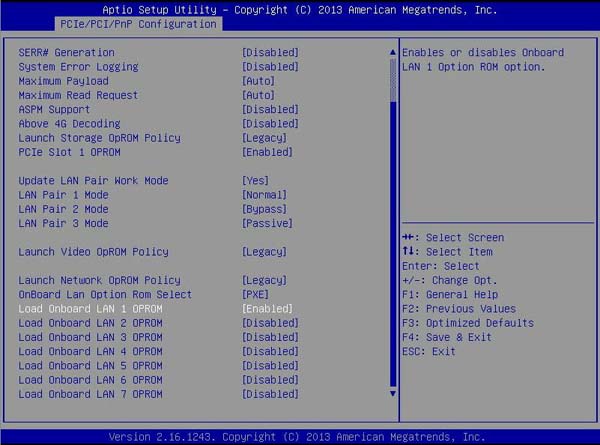
There is a unique feature to this platform which is the LAN Pair Work Mode. One can set LAN functions from standard “Normal” mode to bypass mode here.
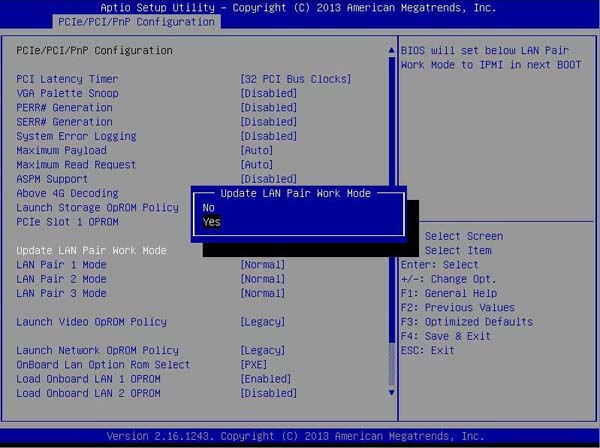
Selecting the LAN pair one can set each of the three NIC pairs to bypass mode individually.
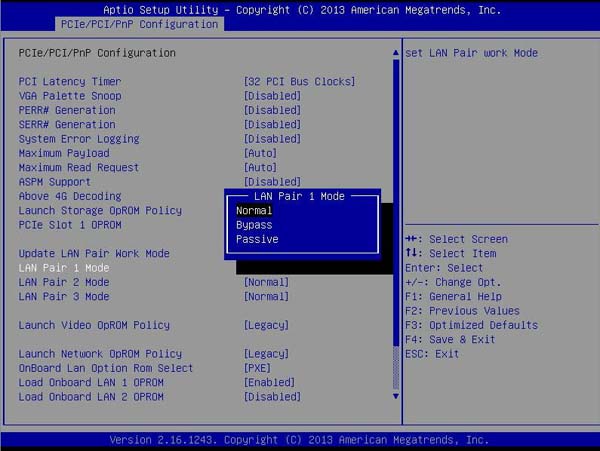
Overall, bypass modes are very easy to configure.
Thermal Results
To capture these images we utilize our FLIR Ex series professional thermal imaging camera and turn on FLIR’s MSX enhancements so we can see components outlined clearly. We put the system under 100% CPU load for a period of 24 hours to let “heat soak” set in prior to taking the images.
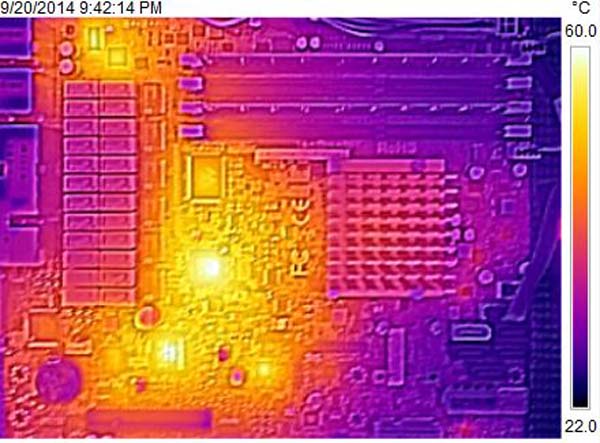
The CPU heatsink is very cool. The NICs are running relatively cool. Overall this is an excellent result for an embedded platforms.
Software and Management
Supermicro’s IPMI and KVM-over-IP as described a few times on this site, allows for a lot of deployment flexibility. Things such as fan speeds, chassis intrusion sensors, thermal sensors, and etc. can be monitored remotely. Alerts can be setup to notify the admins of issues. Beyond this, the functionality also allows for remote power control. You can do remote power up, power down, and reset of the server in the event that it becomes unresponsive. In fact, the test system has never had a keyboard, mouse, CD/DVD ROM, or monitor hooked up to it, even after multiple BIOS tweaks and operating system/ hypervisor installations.
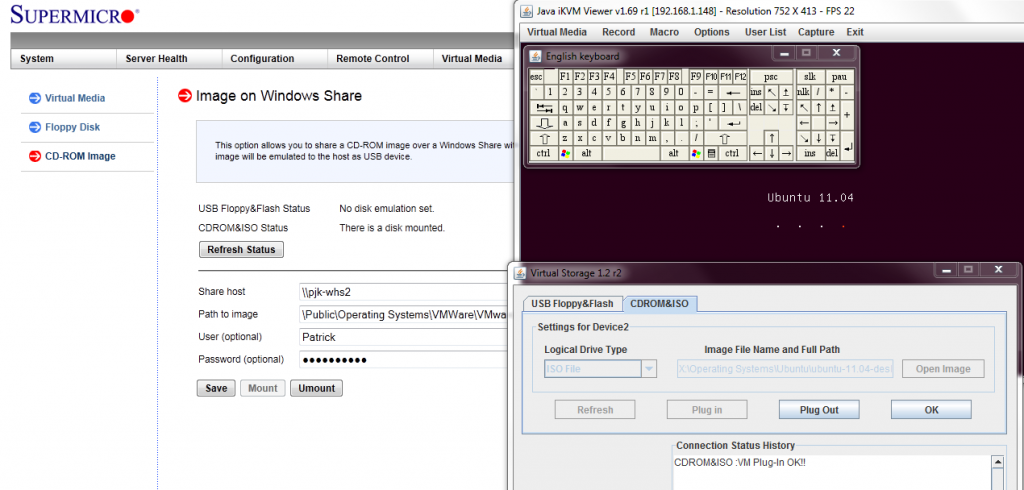
Another important feature is the ability to remotely mount CD images and floppy images to the machine over the dedicated management Ethernet controller. This keeps maintenance traffic off of the primary Intel NICs. At the same time it removes the need for an optical disk to be connected to the Supermicro motherboard.
Conclusion
Overall, this is going to be the top Rangeley motherboard for network appliances. We have reviewed Intel Atom C2000 based platforms from several vendors now and in terms of being a network appliance, this is nothing short of awesome. In testing we were able to run pfsense both bare metal and in hypervisors, vyatta, linux-based firewalls and etc. The platform ran cool, was stable for the few weeks of testing thus far and is extremely compact. In summary, this product has received one of the highest ratings this site has given out in over five years of product reviews. We review many platforms with easy substitutes, however there is nothing comparable, from a networking perspective, to the Supermicro A1SRM-LN7F-2758.
Join the forum thread started on this platform to discuss this motherboard that has additional information.

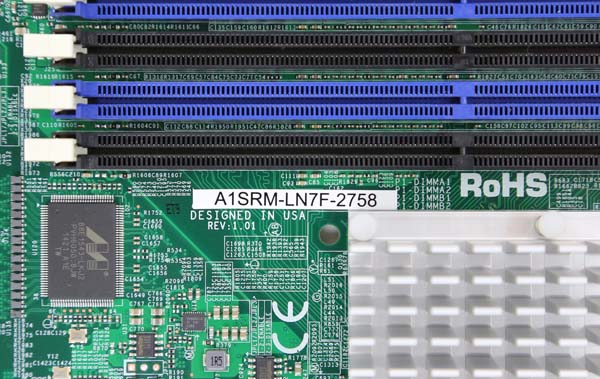
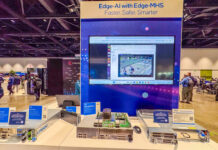
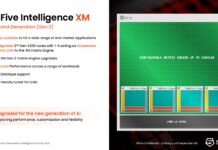
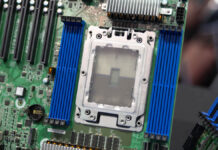
WOW! This is %#$!% awesome! One problem. I can’t buy them. Darn your pre-release press samples.
Do you know the standard chassis for them?
Fascinating piece of hardware! I want one.
A question: what do you use all those NICs for? I have seen quad NIC boards that are quite expensive. Why would anyone want a quad NIC board, or seven NICs? What are use cases? And no home user wants that many nicks, no?
Bypass adapters! You need 2 NICs per pair. One iSCSI/ PXE boot for provisioningor even better for a heartbeat interfact.
Then 2-3 for bypass pairs from your router to the rest of your LAN.
Even 4 on the other versions is easy. 2 WAN connections on each and 2 LAN connections lets you get some redundancy.
Nice review. I can’t find them anywhere though.
Terrific piece of hardware! Hope the price will be nice soon too ;)
If Zyxel would use this MB in their USG range, it would be an awesome piece of networking hardware combined with rock solid software. If only…
Whether this motherboard is awesome or not depends on its price. ServeTheHome’s recent reviews almost always avoid transparent pricing on the hardware it is revewing, which is disappointing. I remember when ServeTheHome first started, Patrick was writing articles on how to do DIY JBODs and how to buy the cheapest good deals off of ebay.
Just to point out the obvious. Patrick, can you tell me how HP’s moonshot ARM server cluster, or a motherboard with 7 gigE NICs is relevant to ServeThe”Home”?
good point…
7 ports means I don’t need an extra switch in the home office.
US $499.99
Embedded Communication Rangeley 3 pair LAN Bypass
Key Features
1. Intel® Atom processor C2758, SoC, (Rangeley), 20W 8-Core, 2.4GHz
2. Up to 64GB DDR3 1600MHz ECC or non-ECC UDIMM
3. 7x GbE LAN including 6 ports LAN bypass (SW programmable) ports with SoC I354, I350-AM2 and I210-AT
4. IPMI 2.0 with shared LAN
5. 2x SATA3 ports, 4x SATA2 ports
6. 1x PCI-E 2.0 x4 (in x8) slot
7. 7x USB 2.0 ports
8. 12V DC or ATX Power options
9. Operating Temperature: 0°C – 60°C
10. 7-Year product life
Links & Resources
Motherboard Manual
Update Your BIOS
IPMI Firmware
Download the Latest Drivers and Utilities
Download Driver CD
OS Compatibility
Product SKUs
MBD-A1SRM-LN7F-2758 -B
A1SRM-LN7F-2758 (Bulk Pack)
Physical Stats
Form Factor
mATX
Dimensions
8.0″ x 9.6″ (20.32cm x 24.38cm)
Processor/Cache
CPU
Intel® Atom™ Processor C2758 (formerly Rangeley)
CPU TDP 20W (8-Core), 2.4GHz
FCBGA 1283
System-on-Chip
System Memory
Memory Capacity
4x 240-pin DDR3 UDIMM socket
Supports up to 64GB DDR3 ECC or non-ECC memory
Memory Type
1600/1333MHz ECC or non-ECC DDR3 SDRAM, 240-pin gold-plated DIMMs, x8 width only
DIMM Sizes
16GB, 8GB, 4GB, 2GB
Memory Voltage
1.5 V, 1.35 V
On-Board Devices
SATA
SoC SATA3 (6Gbps), SATA2 (3Gbps)
Network Controllers
Quad GbE LAN w/ Intel C2000 SoC i354 – 2 pairs LAN bypass
Single GbE LAN w/ Intel i210-AT
Dual GbE LAN w/ Intel Ethernet controller i350-AM2 – 1 pair LAN bypass
IPMI
Support for Intelligent Platform Management Interface v.2.0
IPMI 2.0 with virtual media over LAN and KVM-over-LAN support
Aspeed AST 2400 BMC
USB 2.0
C2000 SoC
Video
BMC integrated Aspeed AST2400
Input / Output
Serial ATA
2x SATA3 (6Gbps) ports
4x SATA2 (3Gbps) ports
LAN
7x RJ45 Gigabit Ethernet LAN ports with shared LAN IPMI 2.0
USB
7x USB 2.0 ports (4 rear, 1 Type A, 2 via header)
Serial Port
2x Fast UART 16550 Serial Port (1 rear with RJ45, 1 via header)
DOM
1x SATA DOM (Disk on Module) power connector
1x SuperDOM Supermicro SATA DOM with built-in power connector
VGA
1x VGA Port
Others
TPM 1.2 header
Chassis ( Optimized for A1SRM-LN7F-2758 )
1U Chassis
SC510 (rev.N required), SC512, SC813M/TQ
2U Chassis
SC823M/TQ
Expansion Slots
PCI-Express
1x PCI-E 2.0 x4 (in x8) slot
System BIOS
BIOS Type
128Mb SPI Flash EEPROM with AMI UEFI BIOS
BIOS Features
Plug and Play (PnP)
DMI 2.3
ACPI 5.0
USB Keyboard support
SMBIOS 2.7.1
UEFI
Management
Software
IPMI (Intelligent Platform Management Interface) v2.0
SuperDoctor® 5
Watch Dog
NMI
SUM
Power Configurations
ACPI / ACPM Power Management
Main Switch Override Mechanism
Power-on mode for AC power recovery
PC Health Monitoring
Voltage
Monitors for CPU Cores, +1.8V, +3.3V, +5V, +12V, +5V Standby, VBAT, Memory Voltages.
FAN
Total of 3x 4-pin fan headers
3x fans with tachometer status monitoring
Status monitor for speed control
Status monitor for on/off control
Low noise fan speed control
Pulse Width Modulated (PWM) fan connectors
Temperature
Monitoring for CPU and chassis environment
CPU thermal trip support
LED
System Overheat LED
Other Features
Chassis intrusion detection
Chassis intrusion header
Intel® QuickAssist Technology
3x pairs software programmable GbE LAN Bypass ports
12V DC or ATX power option
Can someone please explain what bypass and passive nic modes are?
Also why would there be a need to use an external router with this board in a home environment ? Surely the whole point of it, in that setting, is to perform the routing/firewalling/etc. for your home. What else would you use all those nics for?
Lastly, shame there are no power-at-the-wall measurements.
Bypass is useful if you have like a firewall, squid, snort etc service box. The premise is that if you have NICs set to bypass, and the server goes down, traffic will still pass through the box. So like, your box flips out, reboots for updates or turns off and you can still pass traffic.
So this is the equivelant of the A1SRi-2758F in some ways since with bypass you get 3x lan + 1x management + 1x lan for storage if you netboot.
@b3nz0n8 I wonder if that is still gouging pricing? At $499 I might bite though. I mean, $160 premium but I’d get the 3 extral lan ports, msata slots and save $45 on memory with full dimms rather than sodimms. Almost a wash in my book.
Ok thanks mate.
+1 Amazing. If they can get the price to $400 or less that’d be amazing.
Seems like the one guy supply these in the US just jacked up his price to $550. It’s an interesting piece of hardware, but I’ll wait until it hits retail.
Any actual stores selling these things yet? Still only finding eBay listings from 1 guy for 550$.
For those that care I have contacted SuperMicro determined where to buy the board. I was directed toward SuperBiiz… There was some confusion but they will be getting some boards in the next week or so. Demand is apparently very high. Board cost is just over 400$ shipped.
Hi All,
I am wanna build a server and play around with Esxi on this board but can’t seem to find the board in VMWare compatibility list, will it board run ESXi?
I am new to wmware, looking to build a server vm and a couple of desktop vm’s. Keeping it all low power. Shouldn’t be a problem?
Your inputs will be appreciated! Regards
Most likely will run esxi. However, will have the same problem all intel c2750 and c2758 processors have which is the lack of support for vt-d. So for me as a virtualization person.. I would not use these boards for storage like stuff or anything I wanted to pass hardware naively to the vm. Other than that these boards will be great for a lot of other possibilities. If your just going to use it as a standard esxi host and dont care to directly pass hardware to the vm then no worries.
I’ve just received one of these in the UK and can say I’m very much so impressed. The board has a plethora of BIOS options, and it works as well as I’d expect it to. the Board works great in CentOS7.
Hi All,
Has anybody found a way to get this motherboard in Canada?
I called one reseller documented on Supermicro website but they could not find this reference on their ordering system for Supermicro…
Let me know if anybody has found a place.
I just bought this board from Superbiiz. I am running 16 GB of DDR3-1600 ECC unbuffered (2x8GB), a PMC 6405e RAID controllor with 2 x WD Black 4TB disks in a RAID1, and am booting ESXi 5.5 off of a 60 GB Axiom SSD connected to the local SATA controller over one of the 6 Gbps interfaces. There were zero hitches! Very pleased with the low-cost low-power setup!
What is your power-at-the-wall measurements?